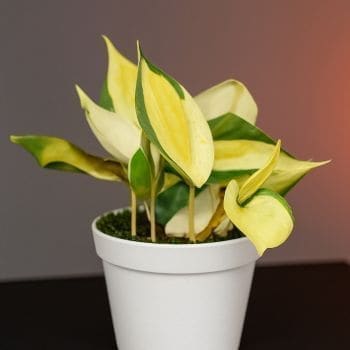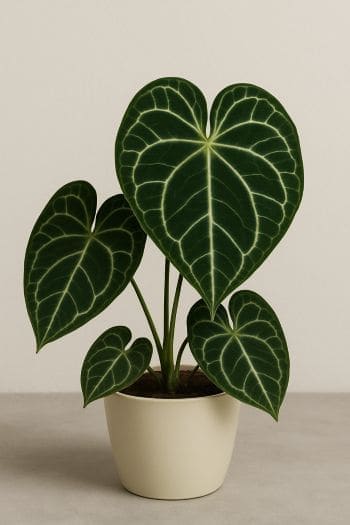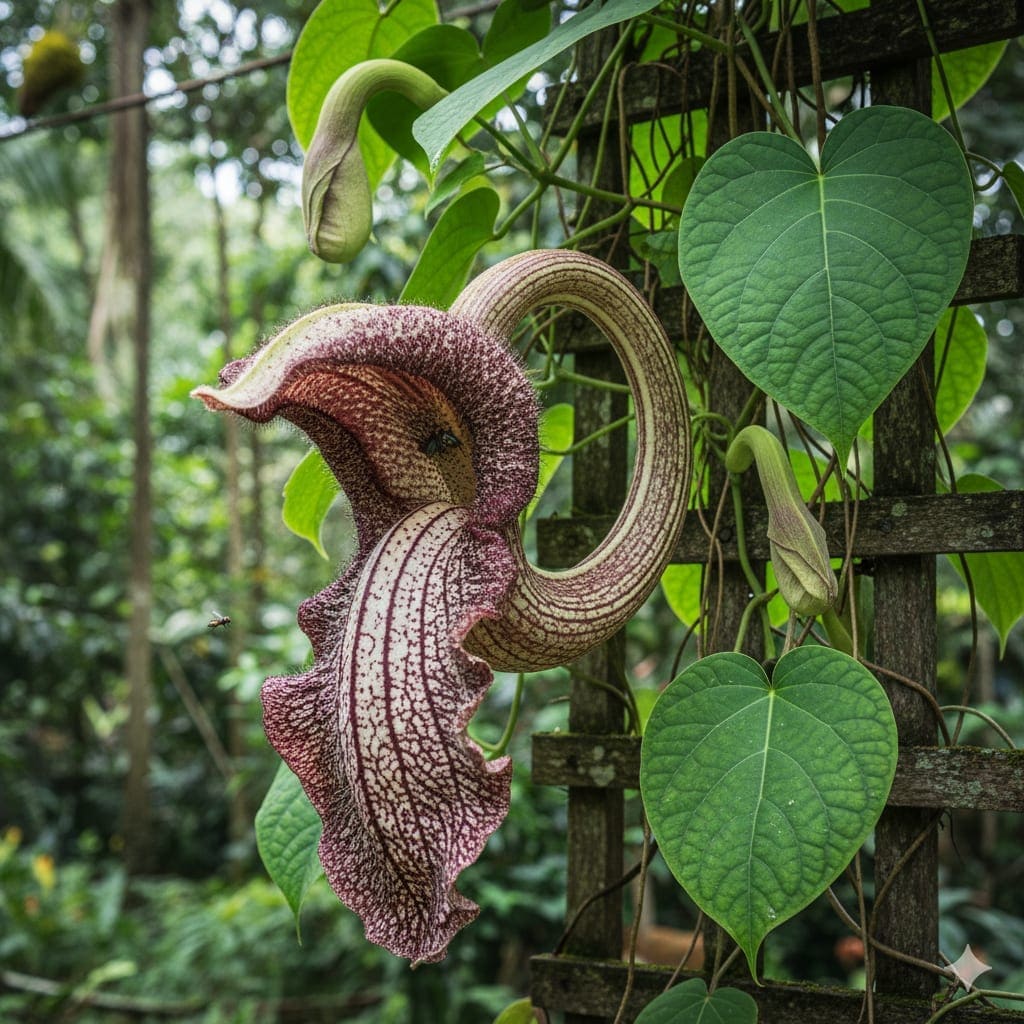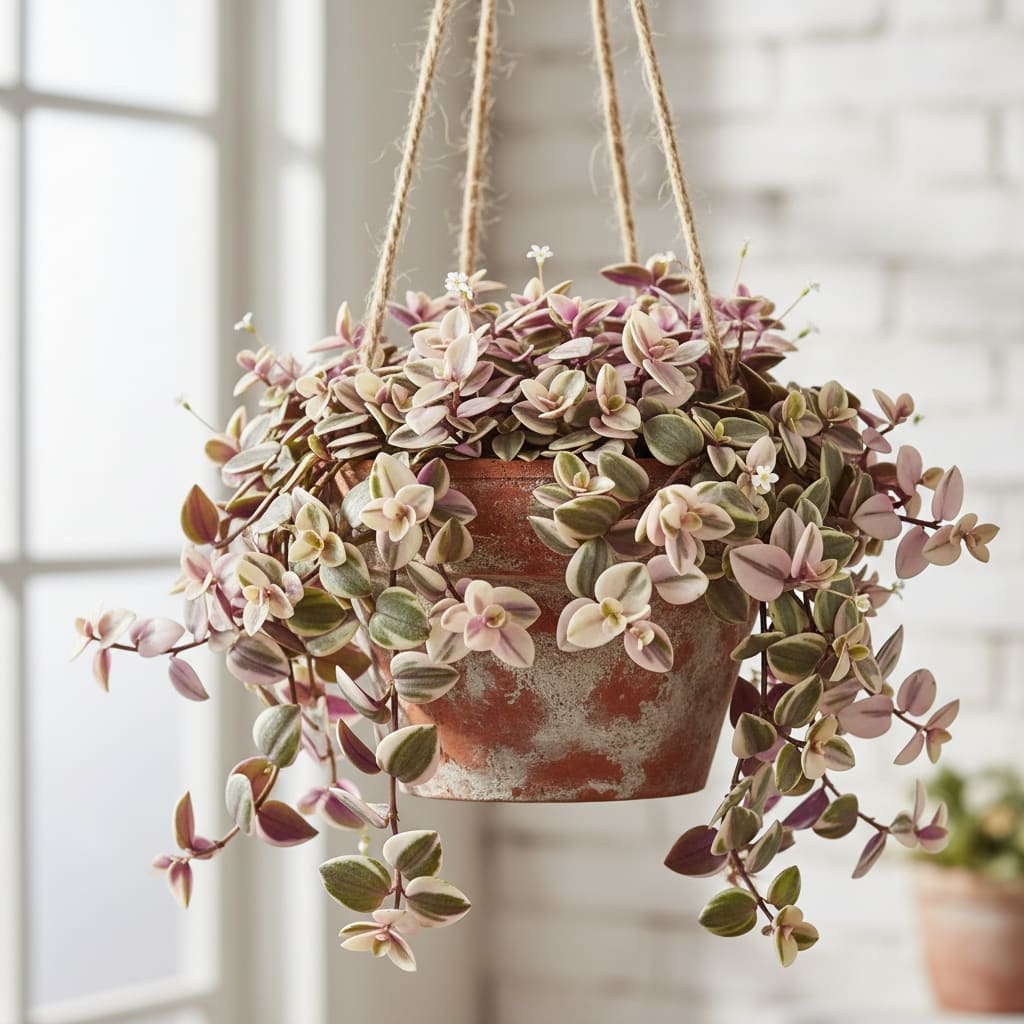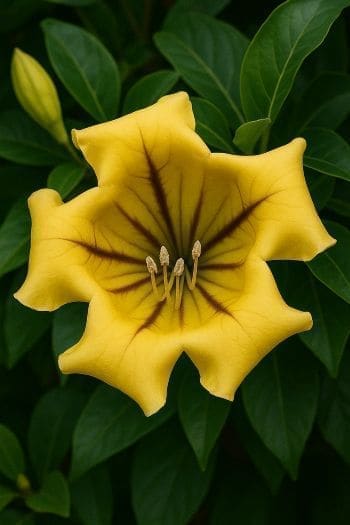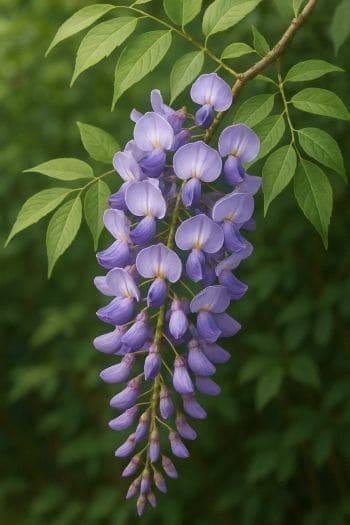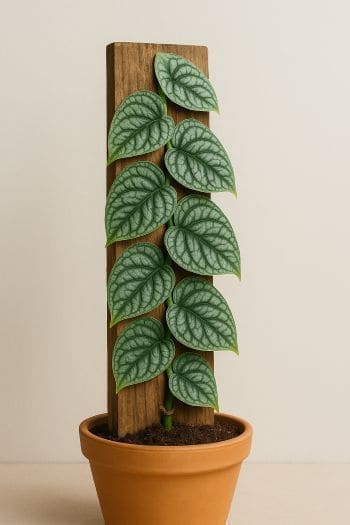Philodendron hederaceum ‘Gabby’ Care & Growing Guide
Overview
Philodendron hederaceum ‘Gabby’ is a rare and striking variegated cultivar of the heartleaf philodendron, native to the tropical forests of Central and South America. Known for its creamy white and green marbled foliage, each leaf displays a unique pattern, making every plant visually distinct. This trailing or climbing houseplant is prized for its ornamental appeal and relatively easy care, provided its basic needs for light, water, and humidity are met.
In its native habitat, Philodendron Gabby grows as an understory climber, using aerial roots to ascend trees in search of light. Indoors, it can be trained to climb a moss pole or allowed to cascade from a hanging basket.
Identification & Growth Habit
Philodendron Gabby is a vining plant with slender, flexible stems and heart-shaped leaves. The variegation ranges from subtle streaks to large creamy-white sectors, often with hints of pale green. Leaves are typically 2–4 inches wide when young but can grow larger under optimal conditions.
- Growth form: Trailing or climbing vine.
- Leaf texture: Smooth and slightly glossy.
- Variegation: Irregular white and green patterns; high variegation requires more light to maintain.
Light & Placement
Place Philodendron Gabby in bright, indirect light to preserve its variegation. Direct sunlight can scorch the leaves, while too little light may cause the white areas to revert to green.
- Best locations: Near a north- or east-facing window, or a few feet back from a bright south- or west-facing window with sheer curtains.
- Artificial lighting: Can adapt to high-quality grow lights if natural light is insufficient.
Watering & Humidity
Water when the top 1–2 inches of soil feel dry to the touch. Overwatering can lead to root rot, especially in dense or poorly draining soil.
- Watering method: Water thoroughly until excess drains from the bottom, then discard any standing water in the saucer.
- Humidity: Prefers humidity above 50%. Use a humidifier, pebble tray, or group plants together to increase moisture in the air.
Soil & Repotting
Use a well-draining, aerated soil mix to prevent waterlogging. A blend of peat moss, perlite, and orchid bark works well. Repot every 1–2 years or when roots begin to circle the pot.
- Choose a pot with drainage holes.
- Gently loosen roots during repotting to encourage healthy growth.
Fertilizing
Feed with a balanced liquid fertilizer diluted to half strength once a month during spring and summer. Reduce feeding in fall and winter when growth slows.
- Avoid overfertilizing, which can burn roots and damage foliage.
- Flush soil occasionally to remove excess salts from fertilizers.
Pruning & Training
Prune to control length, encourage bushier growth, and remove any damaged or reverted leaves. Philodendron Gabby can be trained to climb or trail:
- Climbing: Use a moss pole, trellis, or coir totem to support vertical growth.
- Trailing: Allow stems to cascade from shelves or hanging planters.
Propagation
Philodendron Gabby is easily propagated via stem cuttings. Follow these steps:
- Select a healthy stem with at least two nodes and one or two leaves.
- Cut just below a node using clean, sharp scissors or pruners.
- Remove the lower leaf to expose the node.
- Place the cutting in water or directly into moist, well-draining soil.
- If rooting in water, change the water every few days to keep it fresh.
- Once roots are 1–2 inches long, transplant into soil.
Common Problems
Pests
- Spider mites: Look for fine webbing and speckled leaves; treat with insecticidal soap or neem oil.
- Mealybugs: White cottony clusters; remove manually and treat with horticultural oil.
- Aphids: Small green or black insects; rinse off with water or apply insecticidal spray.
Diseases
- Root rot: Caused by overwatering; remove affected roots and repot in fresh, dry soil.
- Leaf spot: Avoid overhead watering and improve air circulation.
Toxicity & Pet Safety
Philodendron Gabby contains calcium oxalate crystals and is toxic to cats, dogs, and humans if ingested. Keep out of reach of pets and children, and wear gloves if you have sensitive skin when handling cuttings or sap.
Styling & Decor Tips
- Display in a hanging basket to showcase trailing vines.
- Train on a moss pole for a vertical accent in plant displays.
- Pair with solid green plants to highlight its variegation.
Varieties & Cultivars
Philodendron hederaceum has several popular cultivars, including ‘Brasil’ (green with yellow variegation) and the classic solid green heartleaf. ‘Gabby’ is distinguished by its high white variegation and is considered more delicate due to the reduced chlorophyll in its leaves.
Buying Tips & Maturity
- Look for healthy plants with firm stems and vibrant variegation.
- Avoid specimens with mushy stems, yellowing leaves, or signs of pests.
- Variegation patterns may change as the plant matures; stable white variegation often requires consistent bright light.
Seasonal Care
- Spring/Summer: Active growth; regular watering, monthly feeding, and higher humidity support lush foliage.
- Fall/Winter: Growth slows; reduce watering frequency and hold off on fertilizing until spring.
- Protect from cold drafts and sudden temperature drops year-round.
FAQ
- How fast does Philodendron Gabby grow? Growth is moderate; variegated leaves may slow overall growth compared to solid green types.
- Can I grow Philodendron Gabby outdoors? Only in warm, frost-free climates with filtered light; otherwise, keep indoors.
- Why are my Gabby’s leaves turning brown? Possible causes include low humidity, underwatering, or excessive direct sunlight.
- Will my plant lose its variegation? Low light can cause reversion; maintain bright, indirect light to preserve white patterns.
- Do I need to mist the leaves? Misting can temporarily raise humidity but is less effective than a humidifier or pebble tray.
Troubleshooting Scenarios
- Leggy growth with small leaves: Indicates insufficient light; move closer to a bright window or supplement with grow lights.
- Yellow leaves starting from the bottom: Often a sign of overwatering or poor drainage; check soil moisture and pot drainage holes.
- White variegation turning translucent: Can result from cold damage or sudden temperature fluctuations; relocate to a warmer, stable environment.
Advanced Pruning & Training
For a fuller appearance, pinch back vine tips just above a node to encourage branching. Rotate the plant every few weeks to ensure even light exposure and symmetrical growth. Advanced growers can experiment with layering—pinning a vine section with a node into soil in the same pot to root and create a denser plant.
Pest & Disease Quick Reference
- Thrips: Silvery streaks or black specks on leaves; treat with systemic insecticide or repeated neem oil applications.
- Fungus gnats: Tiny flies hovering near soil; reduce watering and use sticky traps or a soil drench with beneficial nematodes.
- Bacterial blight: Water-soaked lesions; remove affected leaves and improve airflow.
Companion Plant Suggestions
Pair Philodendron Gabby with plants that enjoy similar humidity and light, such as Calathea, Pothos, or Monstera adansonii. Combining contrasting leaf shapes and colors can create dynamic indoor displays while simplifying care routines.
Do & Don’t List
- Do: Use clean tools when pruning to prevent disease spread.
- Do: Quarantine new plants before introducing them to your collection.
- Don’t: Place in direct midday sun, which can scorch delicate variegation.
- Don’t: Let the plant sit in waterlogged soil for extended periods.
